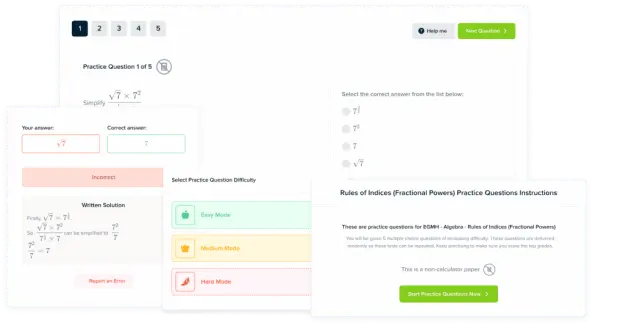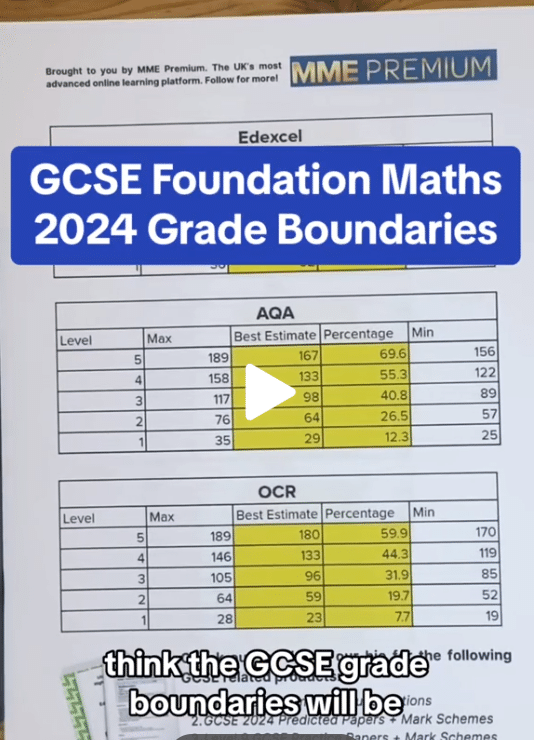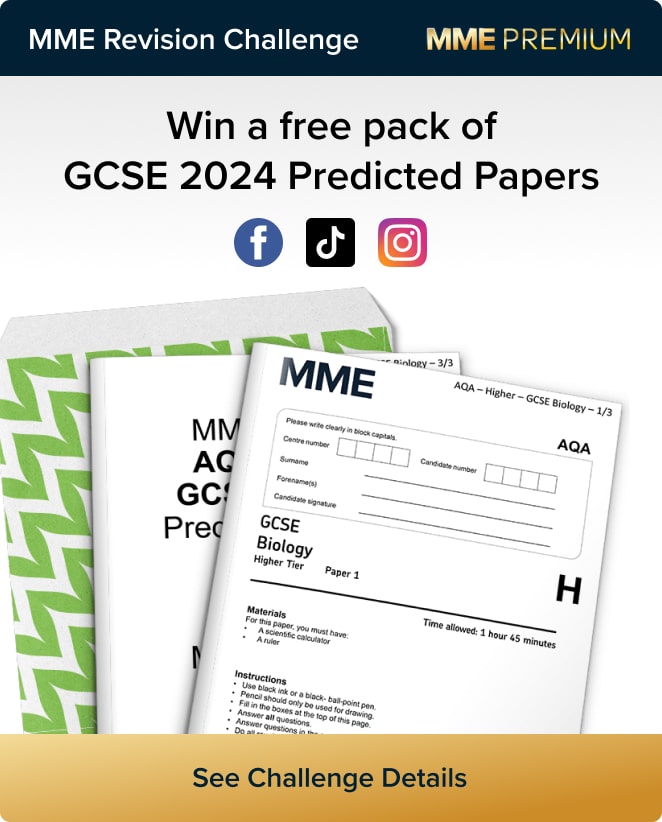Surds
Surds Revision
Surds
A surd is a square root number that doesn’t give a whole number answer, e.g. \sqrt{3}.
More generally, we get a surd when we take the square root of a number that isn’t a square number – so \sqrt{2},\sqrt{3},\sqrt{5} are all surds. There are 7 key skills you need to learn when manipulating surds.
This topic will require a good understanding of:
Skill 1: Multiplying Surds
When multiplying surds you simply multiply the numbers inside the square root.
\sqrt{\textcolor{red}{a}} \times \sqrt{\textcolor{blue}{b}} = \sqrt{\textcolor{red}{a}\times \textcolor{blue}{b}}
Example:
\sqrt{7} \times \sqrt{2} = \sqrt{7 \times 2} = \sqrt{14}
2\sqrt{2} \times 3\sqrt{5} = 2\times 3 \times \sqrt{2\times5} = 6\sqrt{10}
\sqrt{6}^2 = \sqrt{6} \times \sqrt{6} = \sqrt{6\times6} =\sqrt{36} = 6
Skill 2: Dividing Surds
When dividing surds you simply divide the numbers inside the square root.
\dfrac{\sqrt{\textcolor{red}{a}}}{\sqrt{\textcolor{blue}{b}}} = \sqrt{\dfrac{\textcolor{red}{a}}{\textcolor{blue}{b}}}
Example:
\dfrac{\sqrt{10}}{\sqrt{5}} = \sqrt{\dfrac{10}{5}} = \sqrt{2}
\dfrac{8\sqrt{12}}{2\sqrt{3}} = \dfrac{8}{2}\times\sqrt{\dfrac{12}{3}} = 4\times\sqrt{4} = 4\times 2 = 8
Skill 3: Adding and Subtracting Surds
It is only possible to add and subtract “like” surds, this is similar to collecting like terms
\sqrt{a} + \sqrt{a} = 2\sqrt{a}
5\sqrt{b} - 2\sqrt{b} = 3\sqrt{b}
Do NOT do this:
\xcancel{\sqrt{a} + \sqrt{b} = \sqrt{a+b}}
Skill 4: Simplifying Surds
Surds can be simplified if the number within the surd has a square number as one of its factors.
Example: Write \sqrt{28} in simplified surd form.
We need need to think of a square number which is a factor of 28.
28 = \textcolor{red}{4} \times 7
\sqrt{28}=\sqrt{4\times7}=\sqrt{\textcolor{red}{4}}\times\sqrt{7}
We know that \sqrt{\textcolor{red}{4}} = \textcolor{red}{2}
\sqrt{28}=\textcolor{red}{2}\times\sqrt{7}=\textcolor{red}{2}\sqrt{7}
Skill 5: Double brackets and surds
We can multiply out double brackets containing surds the same way as for quadratics using FOIL, then collect like terms.
(m+\sqrt{n}) (m+\sqrt{n})=\textcolor{red}{m^2}+\textcolor{limegreen}{m\sqrt{n}}+\textcolor{purple}{m\sqrt{n}}+\textcolor{blue}{n}\\ = \textcolor{red}{m^2}+\textcolor{maroon}{2m\sqrt{n}}+\textcolor{blue}{n}
Example:
\begin{aligned} &(\sqrt{10} + \sqrt{3})(\sqrt{10} - \sqrt{3}) \\ &= \sqrt{10}^2 - \sqrt{3}\sqrt{10} + \sqrt{3}\sqrt{10} - \sqrt{3}^2 \\ &= 10 -\sqrt{30} + \sqrt{30} -3 \\ &= 10 - 3 \\ &= 7 \end{aligned}
Skill 6: Rationalise the denominator – Simple
Rationalising the denominator just means removing the surd from the bottom of a fraction. There are two types of question you may encounter, one harder then the other. The first type is shown below.
Example: Rationalise the denominator of the following fraction \dfrac{\textcolor{red}{a}}{\sqrt{\textcolor{blue}{b}}}
Simply multiply the top and bottom of the fraction by the denominator of the fraction.
\dfrac{\textcolor{red}{a}}{\sqrt{\textcolor{blue}{b}}} = \dfrac{\textcolor{red}{a}}{\sqrt{\textcolor{blue}{b}}} \times \dfrac{\sqrt{\textcolor{blue}{b}}}{\sqrt{\textcolor{blue}{b}}} = \dfrac{\textcolor{red}{a}\sqrt{\textcolor{blue}{b}}}{\textcolor{blue}{b}}
Skill 7: Rationalise the denominator – Harder
Rationalising the denominator when there are other terms as well as the surd can be much more tricky.
Example: Rationalise the denominator of the following fraction \dfrac{\textcolor{red}{5}}{\textcolor{blue}{3+\sqrt{5}}}
Multiply the top and the bottom of the fraction by the denominator with the sign changed. + becomes - and - becomes +.
\begin{aligned} \dfrac{\textcolor{red}{5}}{\textcolor{blue}{3+\sqrt{5}}} &= \dfrac{\textcolor{red}{5}}{\textcolor{blue}{3+\sqrt{5}}} \times \dfrac{\textcolor{limegreen}{3-\sqrt{5}}}{\textcolor{limegreen}{3-\sqrt{5}}} \\ &= \dfrac{\textcolor{red}{5}\textcolor{limegreen}{(3-\sqrt{5})}}{\textcolor{blue}{(3+\sqrt{5})}\textcolor{limegreen}{(3-\sqrt{5})}} \\ &= \dfrac{15-5\sqrt{5}}{9-3\sqrt{5} + 3\sqrt{5} -5} \\ &= \dfrac{15-5\sqrt{5}}{9 - 5} \\ &= \dfrac{15-5\sqrt{5}}{4} \end{aligned}
Example 1: Rationalising the Denominator
Rationalise the denominator of \dfrac{3}{\sqrt{5}}
[2 marks]
This would be Type 1 so we simply need to multiply the top and bottom of the fraction by the denominator of the fraction
\dfrac{3}{\sqrt{5}} \times \dfrac{\sqrt{5}}{\sqrt{5}} = \dfrac{3\sqrt{5}}{\sqrt{5}\sqrt{5}}
We know,
\sqrt{5}\sqrt{5} = \sqrt{25} = 5
So,
\dfrac{3\sqrt{5}}{\sqrt{5}\sqrt{5}} = \dfrac{3\sqrt{5}}{5}
The denominator no longer involves a surd, only a 5 – which is a rational number – and so we have successfully rationalised the denominator.
Example 2: Rationalising Surds
Rationalise the denominator of the following fraction.
\dfrac{8}{5+\sqrt{2}}
[4 marks]
This is a Type 2 so we need to multiply the top and the bottom of the fraction by the denominator with the sign changed. + becomes - and - becomes +.
This means we must multiply by (5-\sqrt{2}). This is going to involve some bracket expanding. The numerator becomes
\dfrac{8}{5+\sqrt{2}} \times \dfrac{(5-\sqrt{2})}{(5-\sqrt{2})} = \dfrac{8(5-\sqrt{2})}{(5+\sqrt{2})(5-\sqrt{2})}
Now we need to multiply out the top and the bottom of the fraction, then simplify.
The Numerator:
8(5-\sqrt{2})=(8\times5)+(8\times(-\sqrt{2}))=40-8\sqrt{2}
The Denominator:
\begin{aligned}(5+\sqrt{2})(5-\sqrt{2})&=5^2-5\sqrt{2}+5\sqrt{2}-\sqrt{2}^2 \\ &=25-5\sqrt{2}+5\sqrt{2}- 2 \\ &= 25 -2 \\ &= 23 \end{aligned}
Therefore, we can now reform our fraction giving our final answer,
\dfrac{40-8\sqrt{2}}{23}
Surds Example Questions
Question 1: Write \sqrt{75} in simplified surd form.
[1 mark]
We are looking for a square number that goes into 75. There is one: 25. Specifically, 72=25\times3
Using the multiplication rule, we can write,
\sqrt{75}=\sqrt{3\times25}=\sqrt{3}\times\sqrt{25}
The square root of 25 is 5, so this becomes,
\sqrt{3}\times\sqrt{25}=\sqrt{3}\times5=5\sqrt{3}
Thus, the answer in simplified surd form is 5\sqrt{3}
Question 2: Write \sqrt{63} in simplified surd form.
[1 mark]
\sqrt{63}=\sqrt{9\times7}=\sqrt{9}\times\sqrt{7}=3\sqrt7
Question 3: Write \sqrt{\frac{3}{16}} in simplified surd form.
[2 marks]
Using, \sqrt{\frac{a}{b}}=\frac{\sqrt{a}}{\sqrt{b}}, the expresion can be simplified to,
\sqrt{\dfrac{3}{16}}=\dfrac{\sqrt3}{\sqrt16}=\dfrac{\sqrt3}{4}
Question 4: Rationalise the denominator of the following fraction. Write your answer in its simplest form
\dfrac{12}{\sqrt{3}}
[2 marks]
We will multiply the top and bottom of this fraction by the surd on the bottom: \sqrt{3}
Doing so, we get,
\dfrac{12}{\sqrt{3}}=\dfrac{12\times\sqrt{3}}{\sqrt{3}\times\sqrt{3}}
The numerator is just 12\sqrt{3}. Using the multiplication rule, the denominator is
\sqrt{3}\times\sqrt{3}=\sqrt{3\times3}=\sqrt{9}=3
Therefore, the fraction is,
\dfrac{12\sqrt{3}}{3}
However, this is not in its simplest form. We can cancel a factor of 3 from the top and bottom and get,
\dfrac{12\sqrt{3}}{3}=\dfrac{4\sqrt{3}}{1}=4\sqrt{3}
Question 5: Rationalise the denominator of the following fraction. Write your answer in its simplest form.
\dfrac{7}{\sqrt{10}-1}
[4 marks]
We will multiply top and bottom of this fraction by (\sqrt{10}+1). So, the numerator becomes
7\times(\sqrt{10}+1)=7\sqrt{10}+7
Then, using FOIL, the denominator becomes
(\sqrt{10}-1)(\sqrt{10}+1)=\sqrt{10}\times\sqrt{10}+1\times\sqrt{10}-1\times\sqrt{10}-1\times1
Completing each multiplication, including applying the multiplication law to the first term, we get
\sqrt{10\times10}+\sqrt{10}-\sqrt{10}-1
The first term is \sqrt{10\times10}=\sqrt{100}=10. So, denominator finally becomes
10-1=9
Thus, the fraction is
\dfrac{7\sqrt{10}+7}{9}
This can also be written as
\dfrac{7(1+\sqrt{10})}{9}
Surds Worksheet and Example Questions
(NEW) Surds - The Basics Exam Style Questions - MME
Level 6-7GCSENewOfficial MME(NEW) Surds - Rationalise and harder Surds Exam Style Questions - MME
Level 8-9GCSENewOfficial MMESurds Drill Questions
Surds 1 - Drill Questions
Level 6-7GCSESurds 2 - Drill Questions
Level 6-7GCSESurds Hard - Drill Questions
Level 6-7GCSE
MME Premium Membership
£19.99
/monthLearn an entire GCSE course for maths, English and science on the most comprehensive online learning platform. With revision explainer videos & notes, practice questions, topic tests and full mock exams for each topic on every course, it’s easy to Learn and Revise with the MME Learning Portal.
Sign Up Now





